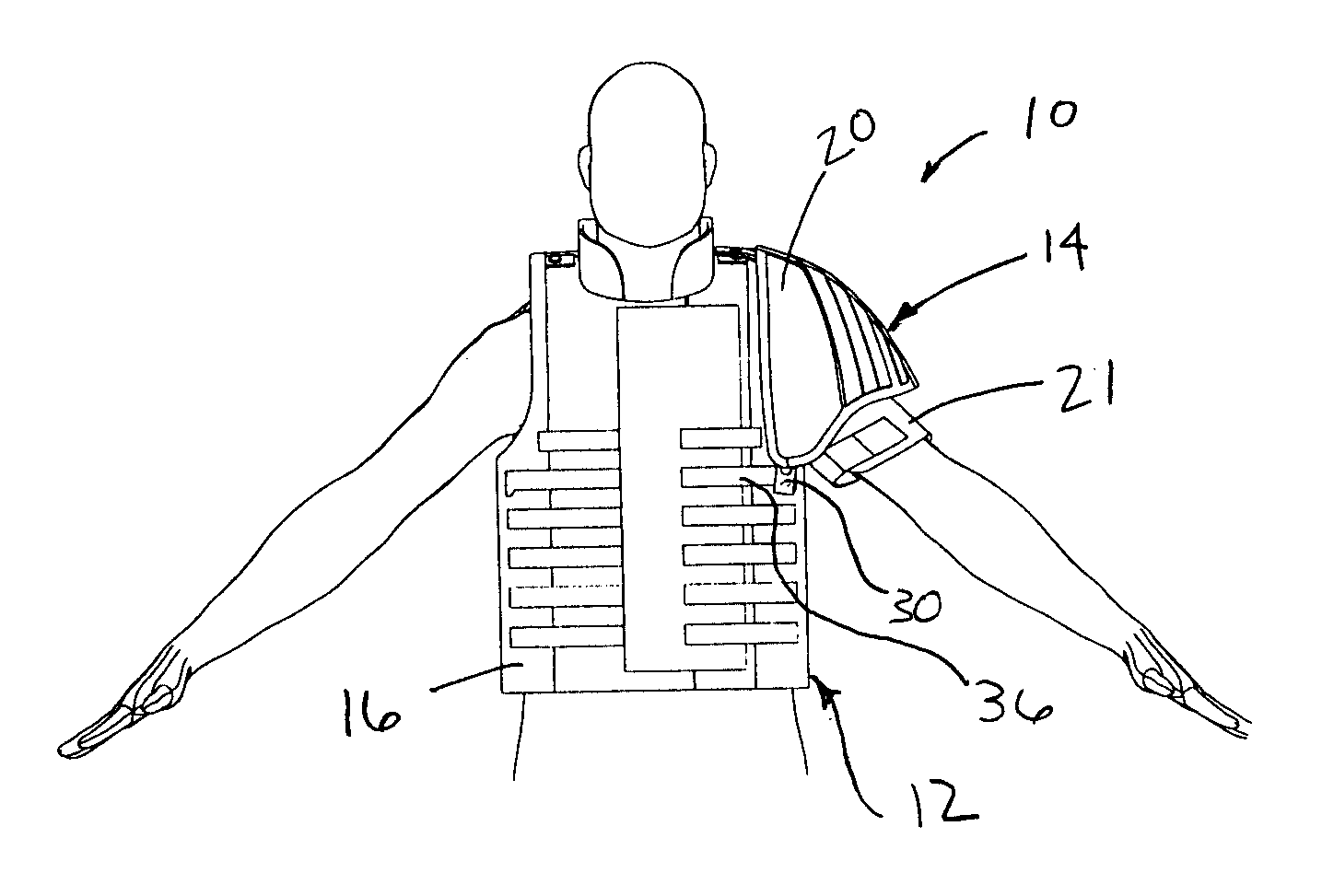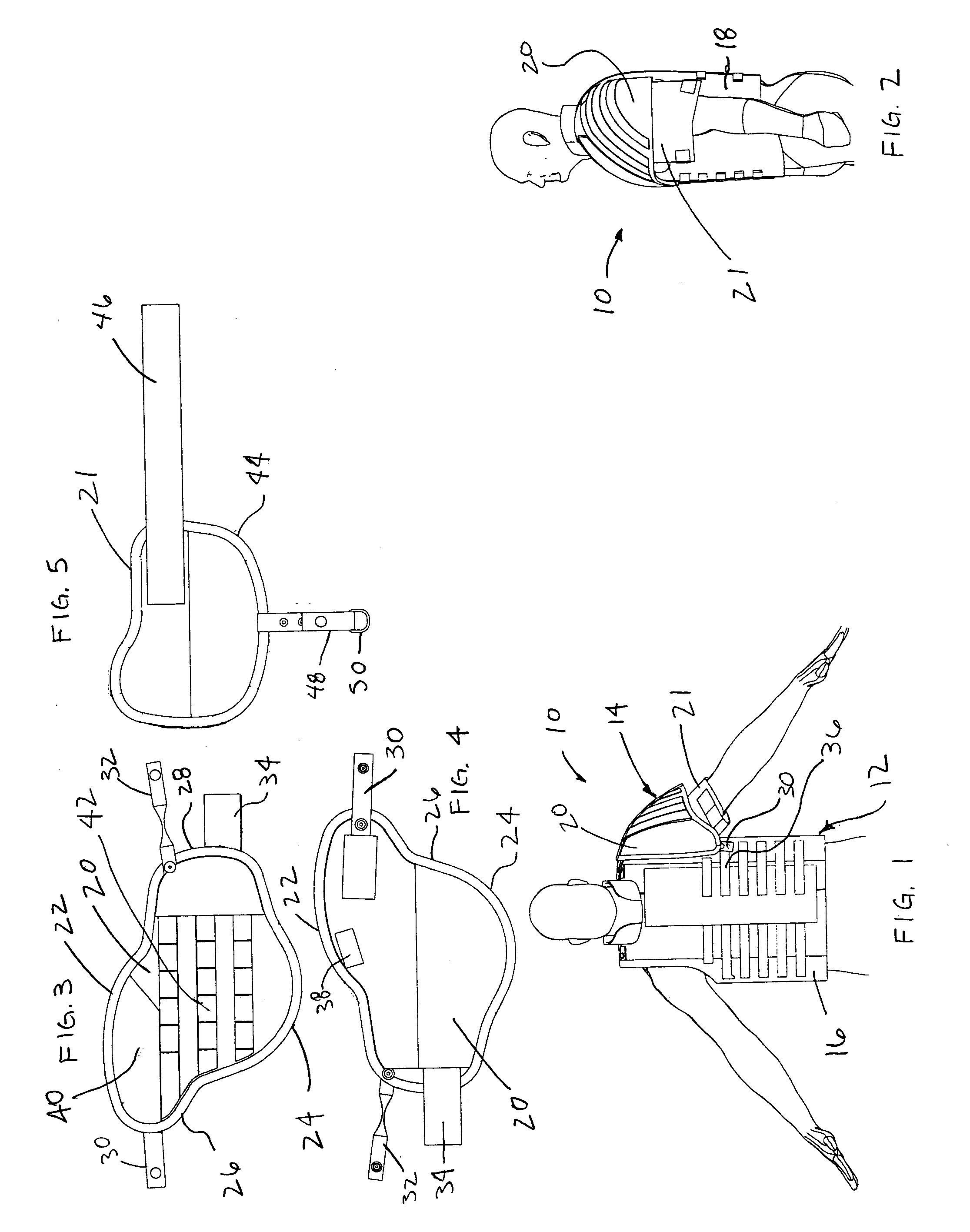Deltoid arm protection system for ballistic body armor
a technology of arm protection system and ballistic body armor, applied in the direction of protective clothing, protective equipment, weapons, etc., can solve the problems of inability to protect the wearer from projectiles entering the body, the vest must not be too flexible, and the wearer is vulnerable to projectiles
- Summary
- Abstract
- Description
- Claims
- Application Information
AI Technical Summary
Benefits of technology
Problems solved by technology
Method used
Image
Examples
Embodiment Construction
[0017] A ballistic vest system 10 of the present invention is shown in FIGS. 1 and 2. The ballistic vest system 10 is an outer tactical vest 12 commonly worn by military and law enforcement officers and includes a deltoid arm protection system 14. The ballistic vest includes a front panel 16 and a rear panel 18. The front panel 16 protects the chest and stomach of the wearer while the rear panel 18 protects the back of the wearer. Both the front and rear panels protect the sides of the wearer. Contained within the front and rear panels is a ballistic package which comprises individual layers of ballistic material located within a covering layer as commonly known. The deltoid arm protection system 14 includes a deltoid cover 20 and an optional bicep cover 21. Although FIGS. 1 and 2 illustrate only one deltoid cover 20 and bicep cover 21, it is to be understood that they are located on both sides of the vest.
[0018] As also can be seen in FIGS. 3 and 4 the deltoid cover 20 has a compo...
PUM
 Login to View More
Login to View More Abstract
Description
Claims
Application Information
 Login to View More
Login to View More - R&D
- Intellectual Property
- Life Sciences
- Materials
- Tech Scout
- Unparalleled Data Quality
- Higher Quality Content
- 60% Fewer Hallucinations
Browse by: Latest US Patents, China's latest patents, Technical Efficacy Thesaurus, Application Domain, Technology Topic, Popular Technical Reports.
© 2025 PatSnap. All rights reserved.Legal|Privacy policy|Modern Slavery Act Transparency Statement|Sitemap|About US| Contact US: help@patsnap.com


